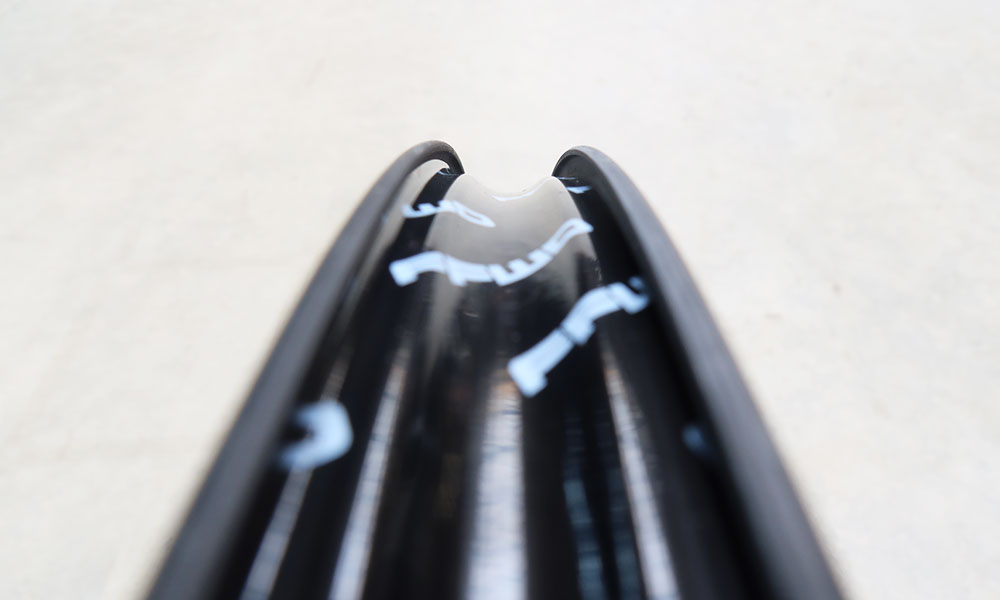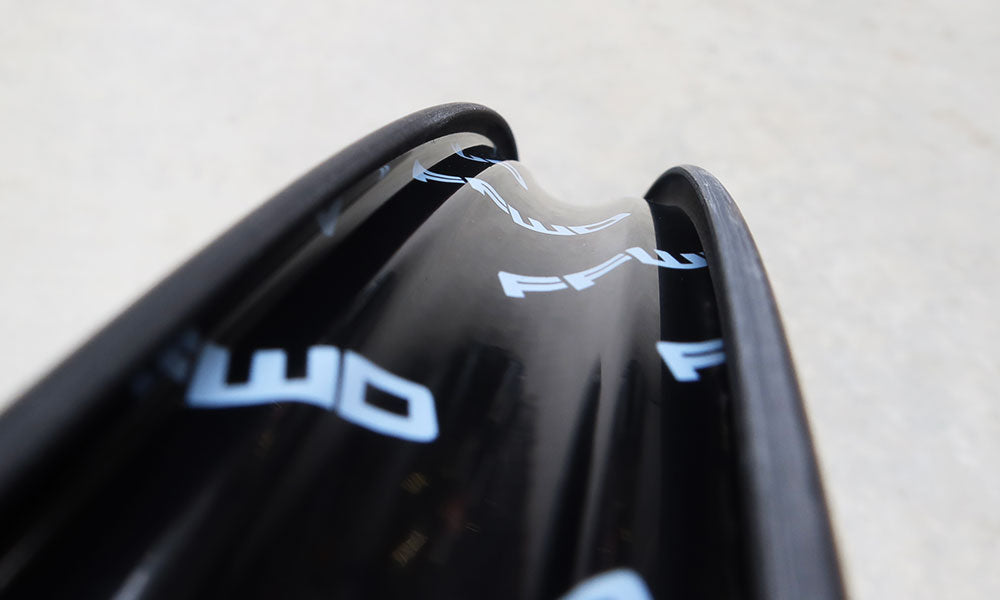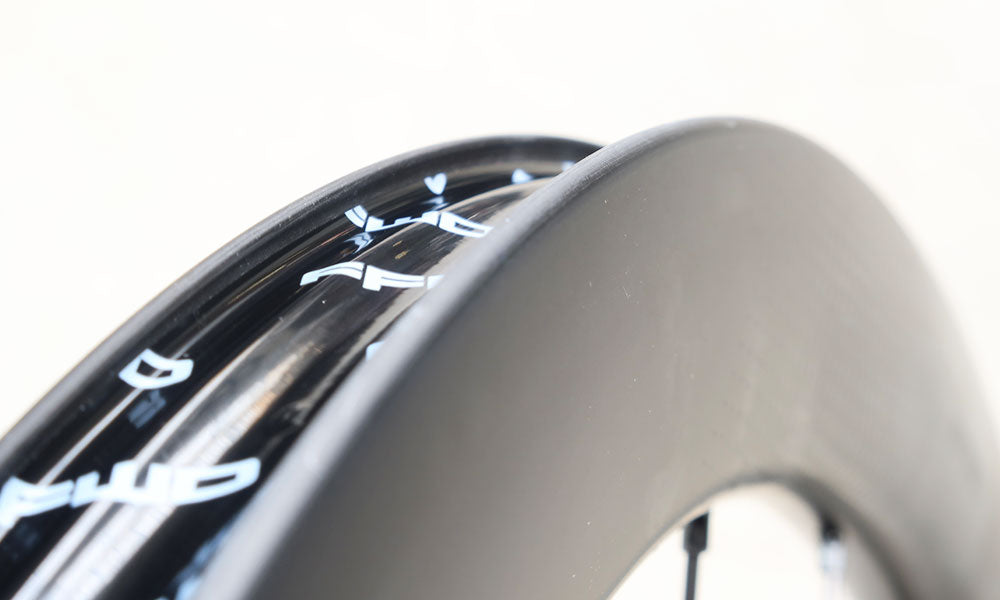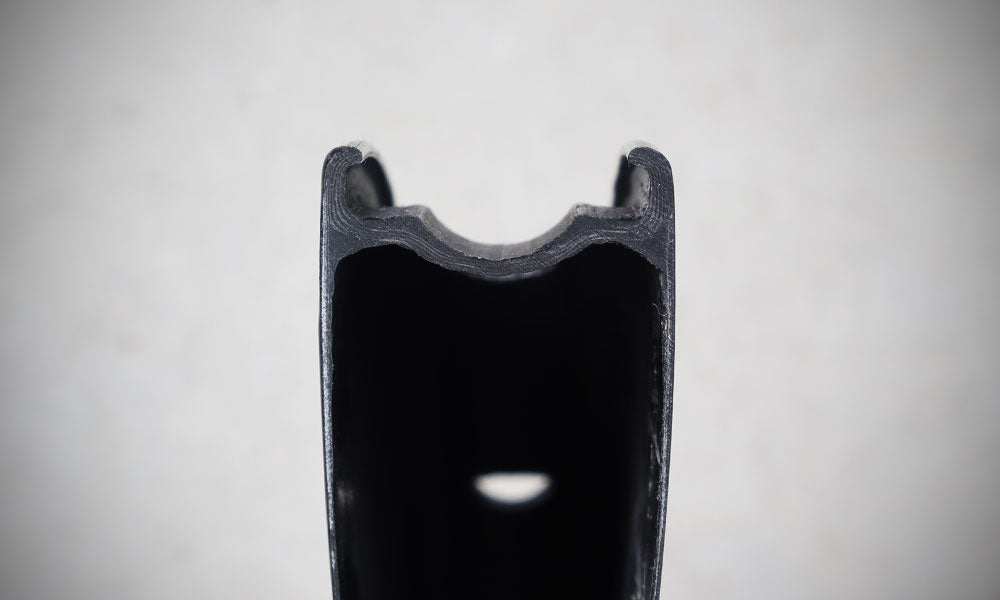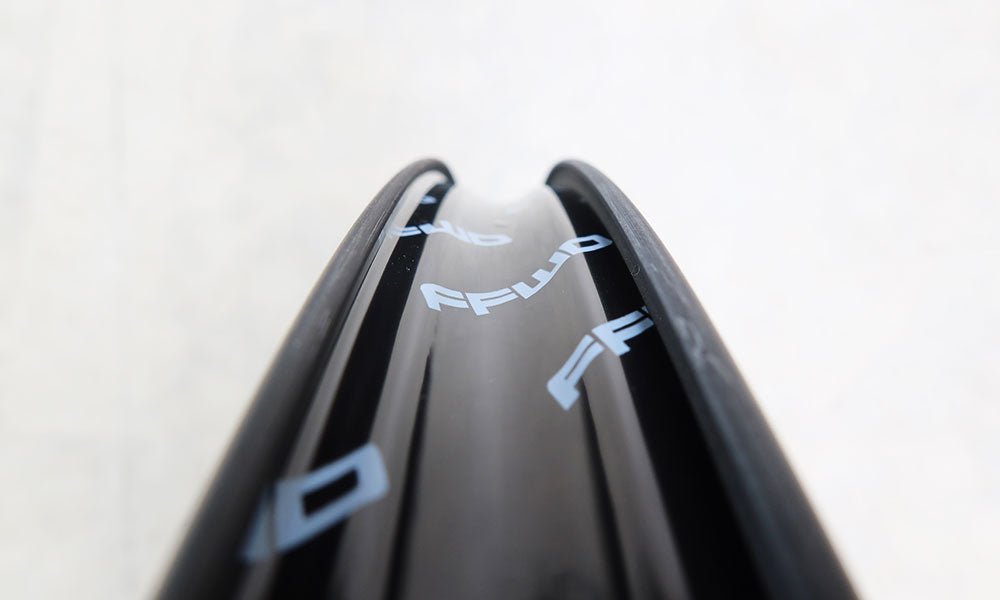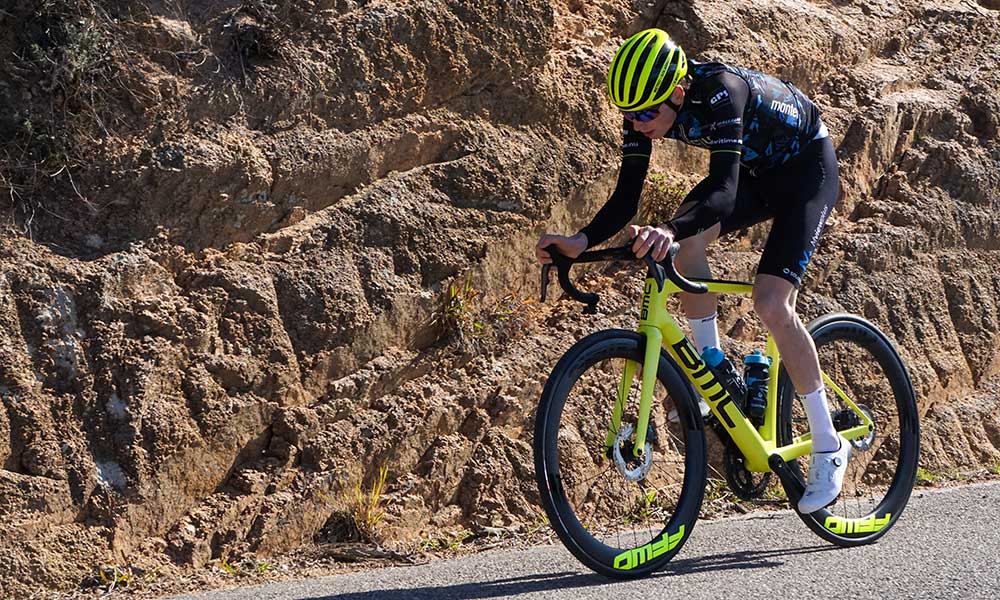After reading this blog, you will know everything about:
- Why we choose hooked rims
- Hookless rims for gravel and MTB
- What is a hooked and what is a hookless rim
- The pros and cons of hooked and hookless rims
- Availability of tires for different types of rims
- The width of tires and tire pressure
Why we choose hooked rims
Looking at the specifications of FFWD wheels for road bikes, you may notice that all rims are "hooked. With the emerging trend of hookless rims we see an increasing demand for why we (consciously) choose hooked rims. We are happy to explain this choice to you.
- One of the reasons is compatibility. We want (almost) all tires to be able to be mounted on our wheels, regardless of the width and setup (tubeless or inner tube).
- The disadvantages do not outweigh the advantages. By this we indicate that advantages such as weight, strength and performance are marginal.
- Hookless rims for road bikes is (at the time of writing) still too much in an experimental phase. We are not convinced that the market and consumers are ready for this step forward.
- The safety for users of our wheels is the most important reason for us to choose hooked rims. Without directly claiming that hookless wheels are unsafe.
Hookless rims for graveling and MTB
For the off-road wheels in our collection, we did choose hookless rims. Now you may be thinking: why do you use them for gravel bike and MTB wheels? This we will also explain too.
- The number of tubeless tires available for graveling and MTB is very large. In fact, almost all tires are suitable for mounting (tubeless) on hookless rims.
- Both mountain bikes and gravel bikes have wider tires which means that you basically ride with lower tire pressure.
- The advantage of a stronger rim flange is greater with off-road wheels. The chance of damaging the rim in the event of a puncture is greater because the tire pressure is much lower.
What is a hooked and what is a hookless rim
Hooked and hookless means a rim with and without a hook. If these terms sound unfamiliar to your ears we well understand that a bit of explanation is needed. Here it comes:
The term "hook" on a bicycle rim refers to a profile on the inside of the rim flange that a tire "hooks" into so that it stays in place. Without this hook, the tire would jump off the rim as soon as you put it on (high) pressure. This only applies to wire and folding tires in combination with an inner tube and most tubeless ready tires.
A rim without this "hook" is called "hookless", we can't make it any more logical. In a hookless rim the tire does not hook into the hook but remains fixed by a seamless connection of the tubeless tire to the rim flange. On these hookless rims you may only use tires that meet the required specifications (TL/TLR) mounted in combination with a sealant or inner tube.

The pros and cons of hooked and hookless rims
But why choose wheels with hookless rims over hooked versions now? Or the other way around? We list the pros and cons for you.
Advantages hooked rims:
- Wider selection of tires
- Can (usually) be used tubeless or with an inner tube
- Greater range in tire pressure
Disadvantages hooked rims:
- Higher weight
- More complex to manufacture (thus more expensive)
Advantages hookless rims:
- Lower weight
- Stronger rims
- Easier to produce (thus lower production costs)
Disadvantages hookless rims:
- Specific tubeless tires are required (not all tubeless-ready tires are suitable)
- Range of available tires is limited
- Tire pressure limit of up to 5 bar / 70 psi (for a 28 mm tire)
Available tires for different types of rims
As you have already read, your choice of tires is something to consider. Virtually all available tires of any brand are suitable for mounting on hooked rims. This makes choosing your favorite tire a lot easier. With hookless rims, this is not the case.
If you have wheels with hookless rims, you can only mount tubeless (or tubeless ready) tires on them. At the time of writing this article, the selection of tires that are fully compatible with hookless rims is still very limited.
Please note: If you choose wheels with hookless rims, fit only tires that are suitable for this purpose according to the tire manufacturer's instructions. Always consult the fitting and use instructions.
The width of tires and tire pressure
In addition to the types (brand + type) of tires there are some other elements to consider. Also tire width and tire pressure play an important role, especially when used in combination with hookless rims.
In fact tire pressure is always a topic we can't stop talking about. Wider and wider tires are the trend. For modern road bikes a width of 28 mm is mostly the standard now. Wider tires have the advantage of requiring a lower lower tire pressure which provides more comfort, especially if you opt for a tubeless setup.
This also brings a piece of caution. Because when you traditionally used to inflate tires up to 9 to 10 bar this is out of the question with modern wide tires. On a hookless rim it is even dangerous because too high a tire pressure can cause the tire to jump off the rim. So be sure to keep this in mind!

